Dedication To my wife, Katherine, and daughter, Abigail, with all my love Acknowledgments Special thanks to the National Wildlife Refuge System, which stewards the land that is critical to many bird species. Special thanks also to David Sarkoziorida for reviewing the range maps. Edited by Sandy Livoti and Dan Downing Cover, book design and illustrations by Jonathan Norberg Range maps produced by Anthony Hertzel Cover photo: Painted Bunting by Stan Tekiela All photos by Stan Tekiela except (female) by Jim Zipp To the best of the publishers knowledge, all photos were of live birds. Some were photographed in a controlled condition. 10 9 8 7 6 5 4 3 2 1 Birds of Texas Field Guide First Edition 2004 Second Edition 2020 Copyright 2004 and 2020 by Stan Tekiela Published by Adventure Publications An imprint of AdventureKEEN 330 Garfield Street South Cambridge, Minnesota 55008 (800) 678-7006 www.adventurepublications.net All rights reserved Printed in China ISBN 978-1-64755-062-2 (pbk.); ISBN 978-1-64755-063-9 (ebook) TABLE OF CONTENTS WHATS NEW? It is hard to believe that its been more than 15 years since the debut of Birds of Texas Field Guide . This critically acclaimed field guide has helped countless people identify and enjoy the birds that we love.
Now, in this expanded third edition, Birds of Texas Field Guide has many new and exciting changes and a fresh look, while retaining the same familiar, easy-to-use format. To help you identify even more birds in Texas, I have added 7 new species and more than 150 new color photographs. All of the range maps have been meticulously reviewed, and many updates have been made to reflect the ever-changing movements of the birds. Everyones favorite section, Stans Notes, has been expanded to include even more natural history information. Compare sections have been updated to help ensure that you correctly identify your bird, and additional feeder information has been added to help with bird feeding. I hope you will enjoy this great new edition as you continue to learn about and appreciate our Texas birds!  WHY WATCH BIRDS in TEXAS? Millions of people have discovered bird feeding.
WHY WATCH BIRDS in TEXAS? Millions of people have discovered bird feeding.
Its a simple and enjoyable way to bring the beauty of birds closer to your home. Watching birds at your feeder often leads to a lifetime pursuit of bird identification. The Birds of Texas Field Guide is for those who want to identify the common birds of Texas. There are over 1,100 bird species in North America. In Texas alone there have been more than 500 different kinds of birds recorded throughout the years. These bird sightings were documented by hundreds of bird watchers and became a part of the official state record.
From these valuable records, Ive chosen 176 of the most common birds of Texas to include in this field guide. Bird watching, or birding, is one of the most popular activities in America. Its appeal in Texas is due, in part, to an unusually rich and abundant birdlife. Why are there so many birds? One of the reasons is open space. Texas is the second-largest state, with over 268,500 square miles (695,400 sq. km) and about 29 million people.
On average, that is only 96 people per square mile (30 per sq. km). Open space is not the only reason there is such an abundance of birds. It is also the diversity of habitat. Texas can be broken into four distinctive physiographic provinces or habitatsCoastal Plain, Central Lowland, Great Plains and the Basin and Range Provinceeach of which supports a different group of birds. The Coastal Plain makes up most of eastern and southern Texas, a full one-third of the state.
The region near the coast is flat and low-lying. There are 367 miles (591 km) of coastline along the Gulf of Mexico, with a total of 3,359 miles (5,408 km) of coast including the inlets and islands. The Coastal Plain is a great place to see hundreds of birds such as American White Pelicans and Caspian Terns. The Central Lowland and Great Plains regions occupy much of central and northern Texas. This wide, expansive area with a few eroded river valleys is known for its large ranches and cattle grazing. It has a semiarid climate and is a great place to see the Roadrunner and Golden Eagle.
The Basin and Range Province lies to the west of the Great Plains in western Texas. This region has some of the finest scenery in the state and several mountain ranges, including Guadalupe Mountains and Guadalupe Peak. Reaching an elevation of 8,749 feet (2,650 m) above sea level, it is the highest point in Texas. Here is a good place to see birds such as the Woodhouses Scrub-Jay. Water also plays a big part in the bird populations of Texas. The Rio Grande Valley stretches along the Rio Grande River and makes up a 1,000-mile (1,610 km) border with Mexico.
The Rio Grande carries little water during most of the year, but will flood after periods of heavy rain. This area is one of the best places in Texas to see birds. Its warm climate and water sources are great places for many wonderful birds such as the Green Jay and Plain Chachalaca. Damming the rivers has resulted in the formation of large reservoirs in Texas. The largest natural lake in the state is Caddo Lake, which is along the Louisiana border. It is not a single open body of water, but rather a winding network of channels.
Several large artificial lakes include Lake Texoma on the Red River, Toledo Bend Reservoir on the Sabine River and Sam Rayburn Reservoir on a tributary of the Neches River. All of these lakes are good places to look for birds such as Blue-winged Teals and gulls. Varying habitats in Texas also mean variations in the weather. Northern parts of Texas are cooler and moister than southern Texas. In fact, winters can be very cold in north central Texas. Southern Texas can be warm even during winter, and coastal Texas is very moderate by comparison.
Western Texas can be very hot and dry during summer and cold in winter. No matter if youre in the hot, arid deserts or in the cool, moist mountains of Texas, there are birds to watch in each season. Whether witnessing hawks migrating in autumn or welcoming back hummingbirds in spring, there is variety and excitement in birding as each season turns to the next. OBSERVE WITH A STRATEGY; TIPS FOR IDENTIFYING BIRDS Identifying birds isnt as difficult as you might think. By simply following a few basic strategies, you can increase your chances of successfully identifying most birds that you see. One of the first and easiest things to do when you see a new bird is to note its color.
This field guide is organized by color, so simply turn to the right color section to find it. Next, note the size of the bird. A strategy to quickly estimate size is to compare different birds. Pick a small, a medium and a large bird. Select an American Robin as the medium bird. Measured from bill tip to tail tip, a robin is 10 inches (25 cm).
Now select two other birds, one smaller and one larger. Good choices are a House Sparrow, at about 6 inches (15 cm), and an American Crow, around 18 inches (45 cm). When you see a species you dont know, you can now quickly ask yourself, Is it larger than a sparrow but smaller than a robin? When you look in your field guide to identify your bird, you would check the species that are roughly 610 inches (1525 cm). This will help to narrow your choices. Next, note the size, shape and color of the bill. Is it long or short, thick or thin, pointed or blunt, curved or straight? Seed-eating birds, such as Blue Grosbeaks, have bills that are thick and strong enough to crack even the toughest seeds.
Birds that sip nectar, such as Black-chinned Hummingbirds, need long, thin bills to reach deep into flowers. Hawks and owls tear their prey with very sharp, curving bills. Sometimes, just noting the bill shape can help you decide whether the bird is a woodpecker, finch, grosbeak, blackbird or bird of prey. Next, take a look around and note the habitat in which you see the bird. Is it wading in a saltwater marsh? Walking along a riverbank or on the beach? Soaring in the sky? Is it perched high in the trees or hopping along the forest floor? Because of diet and habitat preferences, youll often see robins hopping on the ground but not usually eating seeds at a feeder. Or youll see a Blue Jay sitting on a tree branch but not climbing headfirst down the trunk, like a Red-headed Nuthatch would.
Next page


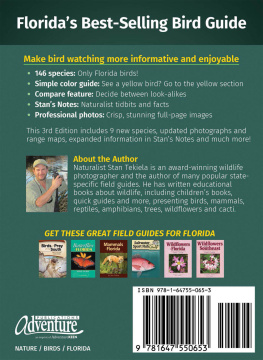
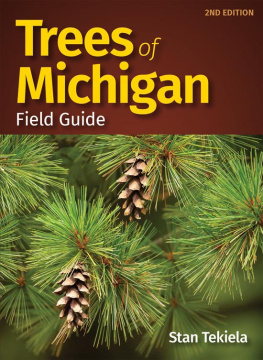
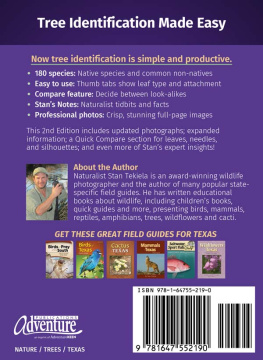
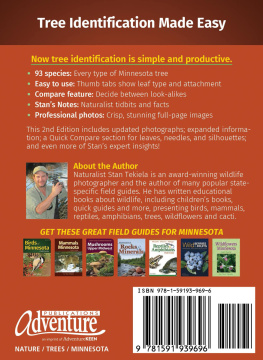


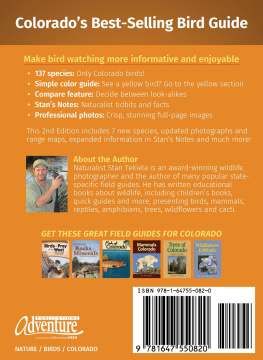
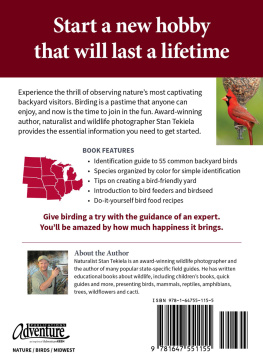
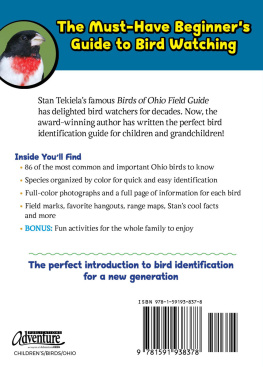
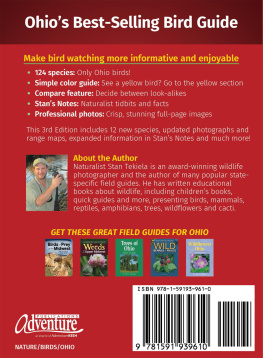

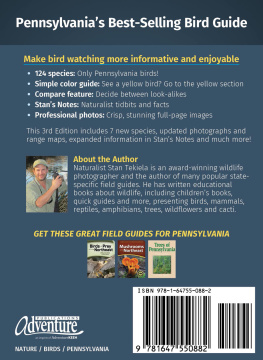
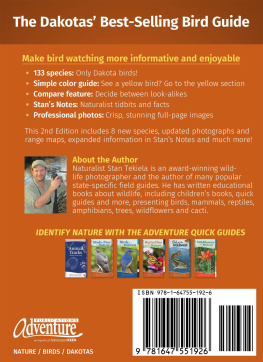
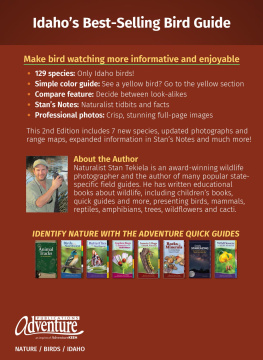
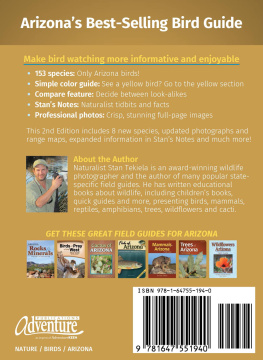

 WHY WATCH BIRDS in TEXAS? Millions of people have discovered bird feeding.
WHY WATCH BIRDS in TEXAS? Millions of people have discovered bird feeding.